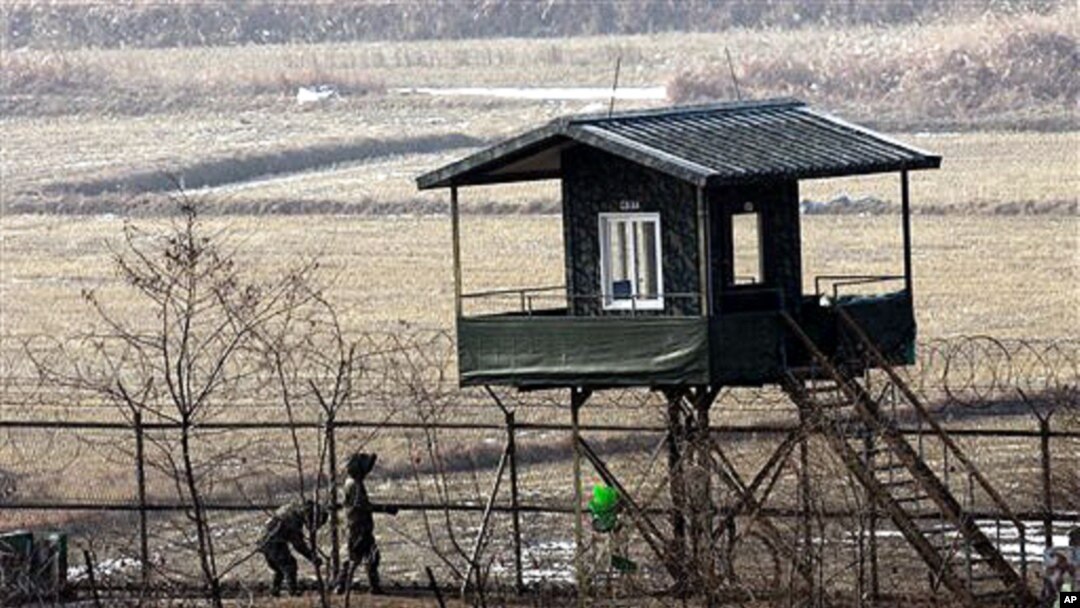As U.S. President Barack Obama prepares to visit the Demilitarized Zone dividing the Korean Peninsula, we take a look at the area and what it symbolizes.
The Demilitarized Zone that separates North and South Korea is the most heavily-fortified border in the world.
Barbed wire, watchtowers and land mines line the DMZ, while across the nearly 250 kilometer-long stretch of land, an estimated two million troops - one million on each side - stand ready to resume battle at anytime.
The DMZ was established in 1953 as part of the armistice agreement that ended combat in the Korean War. There has never been a peace treaty, and the two Koreas have remained in a formal state of war ever since.
Balbina Hwang, visiting professor at Georgetown University and a former State Department adviser on Korean policy, says the zone reminds the world that the Korean War is not over.
“This place is physically a reminder of the fact that the Cold War might have ended around the world, but it is still very much in place on the Korean Peninsula," said Hwang. "This is very much a relic of the beginning of the Cold War, and it’s still there, and it reminds us that the lives of millions and millions of people are in jeopardy every single day.”
Although it is considered one of the most dangerous places on Earth, the DMZ has seen only isolated incidents of violence. In one of the most well-known cases, in 1976, North Korean soldiers killed two U.S. soldiers who were escorting a Korean work force using axes to trim a tree. The North Koreans killed the Americans with the workers' own axes.
International observers monitor the cease-fire at the DMZ, while U.S. troops are stationed alongside the South Korean soldiers.
Despite the threat of tensions, the zone - particularly the Joint Security Area where North and South Korean forces stand face-to-face - is a popular tourist attraction. Visitors can get a glimpse of North Korean soldiers and an apparently uninhabited town, what is referred to as the North Korean "propaganda village."
VOA’s East Asia correspondent Steve Herman has visited the area and says the tours are strict, from U.S. Army escorts to instructions on appropriate clothing, to warnings against pointing at anyone on the North Korean side.
“They get very upset. I mean, it’s very hard when you see something over there in the North, and you’re talking to someone you’re with, and you say, 'Hey, look at that over there,' and you start to point. I mean, I’ve done that. And the soldiers admonish you pretty quickly about it. Another thing that you will sometimes notice is how the South Korean soldiers stand behind these blue buildings. They obscure half of their bodies so as not to be a prominent target for the North Korean troops, so that does give you some indication of how hazardous the duty is at the JSA and in the DMZ," said Herman.
The blue buildings belong to the U.S.-led United Nations Command. Tourists can go into one where the two sides have held negotiations. The building straddles the border, with the dividing line going straight through its negotiating table.
Despite the signs of division, Won-Ki Choi, a senior reporter in VOA’s Korean Service, said the DMZ, which he has visited many times, can also be surprisingly calm.
“The atmosphere is, sometimes it’s [a] very unrealistic feeling," said Choi. "Because in your brain, [you think] “Oh this is where the tragedy of the Korean division [occurred] and this is [a] very military intensive place, but if you go there, there is nothing. Just the military and there are some sound[s] of each side criticizing each other, so sometimes it’s [a] very peaceful atmosphere, but behind this peaceful atmosphere, is a very, very intensive structure of division, military is over there.”
The zone has also become a common stop for U.S. presidents. When President Obama travels there for the first time on Sunday, he follows in the footsteps of Ronald Reagan, Bill Clinton and George W. Bush.
North Korean leader Kim Jong Un, who took over after his father Kim Jong Il's death in December, visited the DMZ earlier this month.
The Korean DMZ: What Might Obama See?

South Korean soldiers check barbed-wire fence near the border village of the South Korean soldiers check the barbed-wire fence near the DMZ that separates the two Koreas since the Korean War (file photo).

